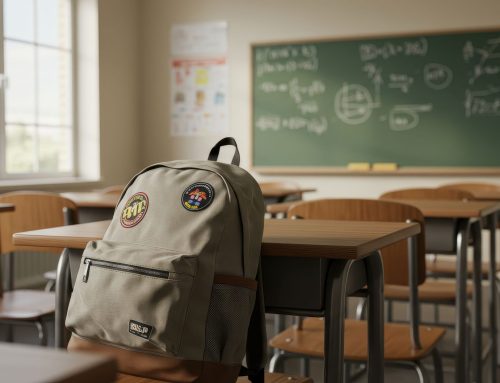October is National Principals Month, and we at NCEED celebrate their excellent work. According to the Bureau of Labor Statistics (2025), principals manage budgets, building maintenance, safety and security, school activities and staff members, establish and oversee class schedules, implement and maintain curriculum standards, counsel and discipline students, observe teachers and evaluate their performance, meet with parents and teachers to discuss students’ progress and behavior, assess and present test results and other student achievement data, organize professional development programs and workshops for staff.
After reviewing that list, I hope it is clear why, as a superintendent, I always interviewed each finalist for a principalship. Principals have a huge responsibility and must be a good match for the needs and culture of a school. Research shows that a principal is the difference between a great school and a poor one. Great principals set high expectations and build positive school climates and cultures. Great leaders motivate and inspire. In times of trouble, they console and help the community heal. They celebrate the school’s successes, but they also hold their school accountable for its challenges. Great principals are true instructional leaders; they are actively engaged in curriculum and instruction.
Many books and articles have been written about effective schools. Most highlight factors identified almost 50 years ago by Ronald Edmonds, the late great pioneer of effective schools research. According to Edmonds, in highly effective schools:
- Principals provide teachers with a greater amount of support
- Teachers are more task-oriented in their classroom approach
- The principals’ leadership abilities are focused on the quality of instruction and setting academic goals
- There is a pervasive and broadly understood instructional focus
- There is an orderly, safe climate that is conducive to teaching and learning
- Teachers have high expectations, and their behaviors convey the belief that all students can learn
- Student achievement is monitored routinely as a measure of program effectiveness (Edmonds, 1979).
Among the critical factors in successful schools, “the effect of the principals is second only to that of teachers in facilitating student learning” (Döş & Savaş, 2015). When I think about the most effective principals I have worked with, I am reminded of a quote about Professional Learning Communities (PLC). “A PLC is not a meeting. It’s a way of being!” (Kramer, 2019). That is what great schools are like, and the principal is the person responsible for creating that “way of being.”
However, change is not easy. As Fullan (2016) noted, transformation is “not an innovation to be implemented, but rather a new culture to be developed.” As Rick DuFour observed, too often, in PLCs, the teachers want to focus on “general topics such as discipline, grading, homework, and field trips. However, for the necessary changes to be successful, the schools must have a laser-like focus on the one most important thing – classroom instruction.” Unfortunately, he added, “In many schools, staff members are willing to collaborate on a variety of topics – as long as the focus of the conversation stops at the classroom door” (DuFour et al., 2006).
Many secondary schools serve as many as 2,000 to 3,000 students every day. Even the smallest schools serve hundreds of students and their families, and their principals support and manage teachers, psychologists, social workers, educational and technology specialists, speech and language therapists, media specialists, security personnel, coaches, volunteers, food service workers, custodians, bus drivers, and many others. It’s easy to understand how some feel they are overworked and underpaid.
As I have noted in prior newsletters, 56% of principals are female, although 77% of public school teachers are women (Pew, 2024). The percentage varies significantly by school level, with women comprising a higher proportion of elementary school principals (69%) compared to middle school (44%) and high school principals (approximately 36%). Most principals in the U.S. are white (77.1%), as are most teachers (80%). Interestingly, however, while only about 7% of public school teachers in the U.S. are Black, a larger percentage of principals are Black (10%). (See NCES, 2020).
The majority of principals have at least a master’s degree, and the average principal’s salary in 2024 was $104,070 (Bureau of Labor Statistics, 2025).
Like teaching, school leadership is as much a calling as a job. One of my favorite quotes about students’ experience in school is that “they may forget what you said, but they will never forget how you made them feel” (Unknown). Those feelings are at the heart of the principal’s responsibilities – the staff and students’ social, emotional, and academic well-being
————————————-
Of course, principals play an essential role in recruiting and hiring a diverse, professional, and caring staff. Elsewhere in this edition of Equity Express, Esther Ward, National Board Certification Coordinator, and Dr. Simone Gibson, Assistant Director for Literacy at NCEED and Associate Professor in the Department of Teacher Education at Morgan State University, discuss strategies to increase recruitment of Black male teachers.
Particularly at the elementary level, the principal must be the instructional leader of the school. Today, as the state begins implementation of the Maryland Comprehensive PreK-3 Literacy Policy, the role of the principal will be of even greater importance. In his article in this months’ Numbers That Matter article, Reading Gaps and the Opportunity to Learn, Bill Caritj, NCEED Research Specialist, examines the “reading gap” and the research on the Science of Reading.
Equity is at the heart of NCEED’s mission (learn more about us here). Our faculty and staff collaborate with families and communities to reduce the gaps between the advantaged and disadvantaged. We support and research schools’ best instructional practices. Now, we are also developing strategies and studies to support the implementation of the Maryland Comprehensive PreK-3 Literacy Policy.
———————————————-
References
Bureau of Labor Statistics, U.S. Department of Labor, Occupational Outlook Handbook, Elementary, Middle, and High School Principals, at https://www.bls.gov/ooh/management/elementary-middle-and-high-school-principals.htm (visited August 28, 2025).
Bureau of Labor Statistics, U.S. Department of Labor, Occupational Outlook Handbook, Elementary, Middle, and High School Principals, at https://www.bls.gov/ooh/management/elementary-middle-and-high-school-principals.htm#tab-2 (visited August 28, 2025).
Döş, İ., & Savaş, A. C. (2015). Elementary School Administrators and Their Roles in the Context of Effective Schools. SAGE Open. https://doi.org/10.1177/2158244014567400
DuFour, R., DuFour, R., Eaker, R., and Many, T. (2006). Learning by Doing: A Handbook for Professional Learning Communities at Work, Solution Tree.
Edmonds R. (1979). Effective schools for the urban poor. Educational Leadership, 37(1), 15-24.
Michael Fullan, 2016. “Enter change”. The NEW meaning of educational change (5th edition). New York: Teachers College Press. pp. 107–120.
Kohn, L. (2020). School of Thought Blog, Comment on: Four Strategies to Implement Effective PLCs, NASSP, https://www.nassp.org/2020/09/29/four-strategies-to-implement-effective-plcs/
Kramer, S. (2019). What’s a PLC Meeting, Anyway? https://www.solutiontree.com/blog/what-is-a-plc-meeting/
NCES, 2020. National Center for Educational Statistics. U.S. Department of Education. https://nces.ed.gov/programs/digest/2020menu_tables.asp).
NCES, 2022. National Center for Educational Statistics. U.S. Department of Education 2020. https://nces.ed.gov/pubs2022/2022112.pdf & https://nces.ed.gov/pubs2020/2020103/index.asp
Pew Research Center, September 2024. Schaeffer, K. Key facts about public school teachers in the U.S. https://www.pewresearch.org/short-reads/2024/09/24/key-facts-about-public-school-teachers-in-the-u-s/







